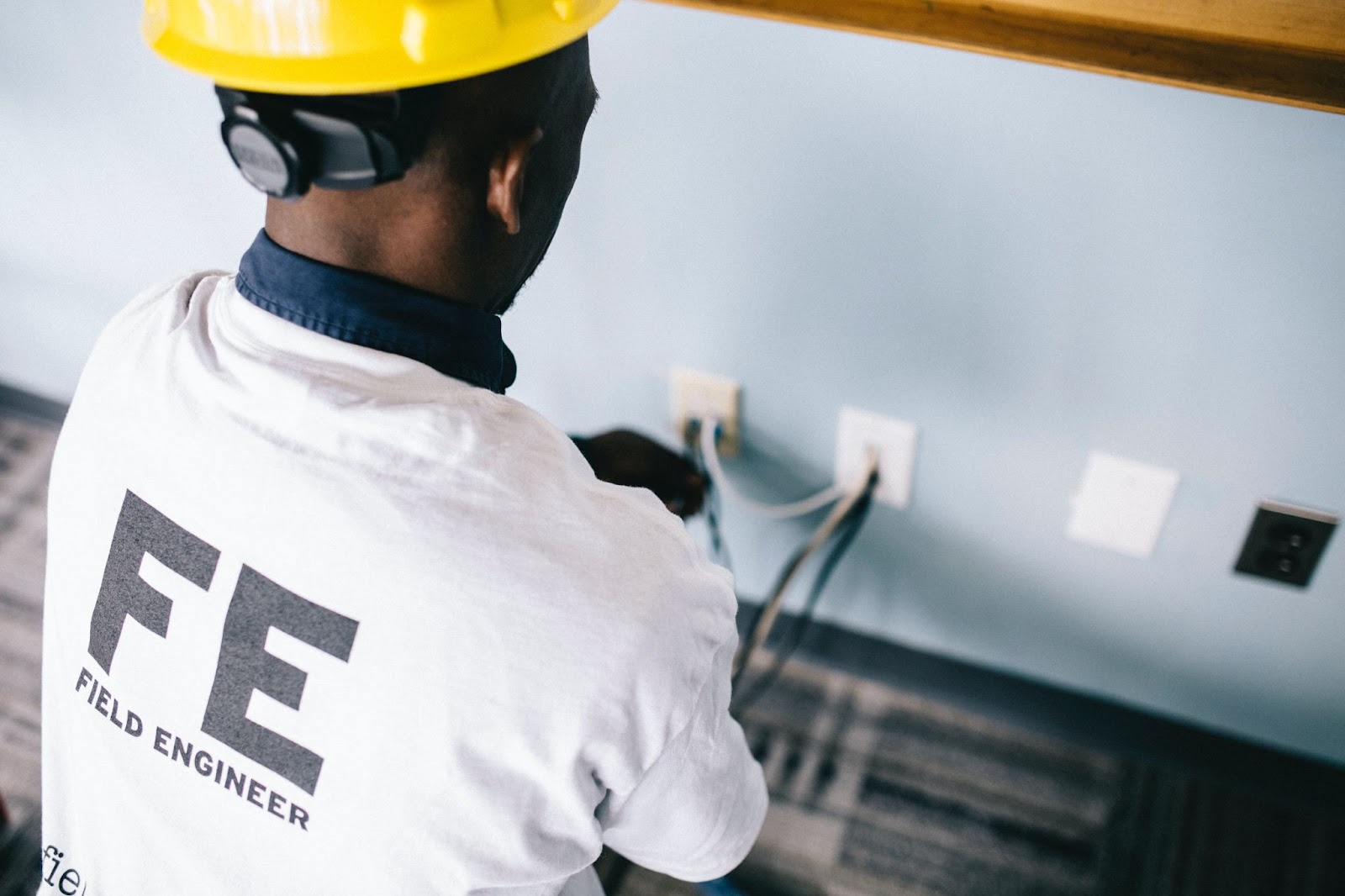SafeDE News
Smarter workplaces are safer workplaces. SafeDE is your resource for OSHA news, regulation changes, recalls, and everything to keep your business safe.
Essential PPE for Staying Safe and Comfortable in Hot Work Environments
Personal protective equipment (PPE) is non-negotiable for workplace safety, but hot weather creates a challenging balance between protection and comfort. With new OSHA heat regulations on the horizon and advancing cooling technologies, there are more options than ever to keep workers safe and help you stay cool and focused on the job.
7 Essential Types of Heat-Protective PPE
Modern cooling PPE has evolved significantly beyond basic protective gear. If you’re working in the heat, here are some of the best options to help you stay safer and more comfortable:
1. Advanced Cooling Vests
Phase Change Material (PCM) Vests These NASA-developed cooling vests maintain a constant 65°F temperature, providing optimal core body temperature regulation. PCM technology uses non-toxic materials that freeze at 58°F/14°C and provide consistent cooling for extended periods.
Evaporative Cooling Vests These vests use specialized cooling crystals or fabric that absorbs hundreds of times their weight in water, slowly releasing it through evaporation. They're ideal for dry heat conditions and offer 4-8 hours of cooling relief.
Ice and Conductive Cooling Vests These portable vests use replaceable cooling packs or ice inserts and are perfect for construction sites and outdoor projects. Recent studies show ice-bag vests can extend thermal comfort by 15-30 minutes in PPE-clad workers.
2. Reflective and Heat-Resistant Clothing
Infrared-Reflective Garments Modern heat-reflective clothing incorporates lightweight, breathable materials with aluminum or silver coatings that reflect up to 95% of radiant heat. These garments are particularly effective in environments with significant heat sources like furnaces or welding operations.
Moisture-Wicking Base Layers Advanced synthetic fabrics pull sweat away from the skin while providing UV protection. Look for garments with UPF 50+ ratings and antimicrobial treatments to prevent odor buildup during extended wear.
3. Enhanced Eye and Face Protection
Heat-Reflective Face Shields Modern shields combine polycarbonate protection with gold or silver infrared-reflecting coatings. Some models now include ventilation systems and anti-fog treatments for improved visibility and comfort.
Cooling Safety Glasses New designs incorporate temples with cooling gel inserts or ventilation channels to reduce heat buildup around the eyes and temples.
4. Targeted Cooling Accessories
Cooling Neck Wraps and Bandanas These portable cooling products provide quick relief and are ideal for workers who need immediate cooling without bulky gear. Options include:
- Polymer crystal-filled wraps that activate in cold water
- Phase change material neck coolers
- Evaporation-based bandanas with specialized fabric
Cooling Towels Microfiber towels with advanced cooling technology that stay cool for hours when activated with water. These are perfect for break periods and quick relief.
5. Innovative Headwear Solutions
Cooling Hard Hat Inserts Removable cooling inserts that fit inside hard hats, using either evaporative cooling or phase change materials. Some models include solar-powered fans for active air circulation.
Sun-Protective Hard Hat Brims and Neck Shades Extended brims and attachable neck protection that provide additional shade while maintaining full head protection requirements.
6. Footwear Enhancements
Cooling Insoles Advanced insoles with gel or phase change materials that help regulate foot temperature. Some include moisture-wicking properties and antimicrobial treatments.
Ventilated Safety Boots New designs incorporate breathable membranes and ventilation channels while maintaining safety standards for impact and puncture resistance.
7. Personal Cooling Systems
Portable Air Conditioning Units Wearable cooling systems that use battery-powered fans and cooling packs. These systems can be integrated into existing PPE and provide 4-8 hours of cooling relief.
Hydration Cooling Systems Backpack-style hydration systems with insulated reservoirs and cooling tubes that provide both hydration and localized cooling.
The PPE Heat Challenge: Understanding the Risks
While PPE is essential for safety, it can significantly increase heat stress risk by:
- Reducing heat dissipation through decreased evaporation and air circulation
- Trapping body heat inside protective garments
- Limiting natural cooling mechanisms like sweating
- Increasing metabolic heat production due to additional weight and movement restriction
Studies conducted during the COVID-19 pandemic highlighted how increased PPE adoption in healthcare and industry creates substantial heat stress challenges, leading to innovative cooling solutions.
Strategic PPE Implementation for Heat Protection
Assessment and Selection
Evaluate Your Environment
- Measure ambient temperature, humidity, and radiant heat sources
- Assess work intensity and duration requirements
- Consider existing PPE mandates and safety requirements
- Factor in worker acclimatization levels and individual risk factors
Choose Appropriate Cooling Technology
- Evaporative cooling: Best for dry heat conditions (humidity <50%)
- Phase change materials: Ideal for consistent, long-duration cooling
- Ice/conductive cooling: Most effective for short-term, high-intensity cooling
- Air circulation systems: Excellent for enclosed or confined spaces
Integration Strategies
Layered Cooling Approach Combine multiple cooling technologies for maximum effectiveness:
- Moisture-wicking base layers
- Cooling vests or inserts
- Reflective outer garments
- Targeted cooling accessories (neck wraps, cooling towels)
Rotation and Maintenance Systems
- Establish PPE rotation schedules to allow cooling and drying
- Create cooling station areas for PPE storage and reactivation
- Implement daily inspection and maintenance protocols
- Train workers on proper activation and care procedures
Protecting workers from heat illness while maintaining essential PPE protection requires a comprehensive approach that combines advanced cooling technologies, strategic work practices, and continuous monitoring. With new cooling PPE innovations and upcoming OSHA regulations, employers have more tools than ever to create safe, comfortable work environments.
The key is selecting the right combination of cooling technologies for your specific work environment and integrating them into a broader heat illness prevention program. Regular assessment, worker feedback, and adaptation to changing conditions ensure optimal protection for your workforce.
For more information on identifying early warning signs of heat illness, visit our guide on Recognizing Warning Signs of Heat Illness.
Get SafeDE News
Workplace safety for all businesses.
SafeDE provides FREE comprehensive onsite surveys for small and medium sized private sector establishments to identify potential workplace hazards, improve safety and health management systems, and assist in voluntary compliance with federal OSHA regulations.
Related News
-1.png)
Tips for Selecting the Right Hard Hat for Electrical Work

Preventing Arc Flash Injuries: Safety Tips & Prevention
-1.png)
Recognizing Warning Signs of Heat Illness at Work
.png)
Lockout Tagout Training: Essential Safety Program
-1.png)
Crane Hand Signals: Guide to OSHA-Compliant Safety
-1.png)
Back Safety Tips: Prevent Injuries in the Workplace
-1.png)
Preventing Ergonomic Injuries: Tips and Strategies


-1.png)
.png)

